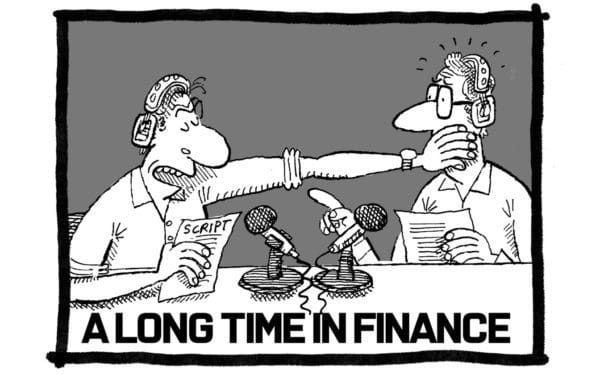A personal view from Ian Stewart, Deloitte’s Chief Economist in the UK.
Money evolves over time. From coins to banknotes, cheques, credit cards, online banking and mobile payments, the search is always for cheaper and more convenient ways of using money. The computer age has turned the bulk of money issued by central banks into digital form. In the UK the share of transactions accounted for by cash has fallen from 55% to 15% over the last decade.
In their early days cryptocurrencies appeared to offer a potential alternative to central bank money. But wildly fluctuating values and uncertainties about governance mean that they are mainly used for speculation rather than transactions.
A simple innovation aims to crack these problems. The value of stablecoins is linked to a benchmark asset, generally an existing currency or a commodity. In 2019 Meta (then Facebook) caused a stir when it announced a plan to create its own stablecoin, Libra, linked to the dollar and other currencies. The prospect that Meta could create a credible, mass-use private currency unnerved central banks and prompted intense scrutiny from regulators. The backlash led to many of the original founder companies leaving the Libra Association. Renamed Diem, the project was wound down last year, and then sold to a Californian bank due to regulatory obstacles.
Diem may have failed, but the threat it posed to traditional money has acted as a wake-up call to central banks. Their fear was that a successful private currency, issued by one of the world’s biggest tech companies, would undermine the power of central banks and weaken their influence over monetary policy.
Central banks around the world have stepped up planning for their own central bank digital currencies (CBDCs). 114 countries, representing over 95% of global GDP, are currently exploring CBDCs. All G7 countries are in the development stage and 11 countries have launched digital currencies. China’s, the largest, reaches a quarter of a billion people and is scheduled to expand to the whole country this year. The governor of the European Central Bank, Christine Lagarde, has said that they would like to see a euro CBDC in operation within two years.
Last month, the Bank of England released its proposal for a digital pound. The document illustrates the potential and the perils of CBDCs.
The proposed pound would be a token-like digital instrument that would need to be held in a digital wallet provided by banks and other approved institutions. It could be spent or transferred online, through smartphones or cards, as is the case today with conventional bank deposits. The Bank of England would provide the central digital infrastructure to facilitate transactions in digital pounds.
Every digital pound would be a direct claim on the Bank of England, unlike the current system in which money put into a bank can be used by the bank to create more money to lend on. Under the Bank of England’s proposal, the wallet provider would merely record and facilitate the holder’s use of the CBDC – the provider would not be able to use the deposit to create credit.
Imagine then a world in which the digital pound existed. Since central banks cannot go bust – they have the magical capacity to create money without limit – many people would shift money from riskier banks to the safety of the Bank of England. That would leave the commercial banks with fewer deposits to create credit. Unless they borrowed on wholesale money markets, which is expensive, banks’ ability to lend would be eroded. The traditional fractional banking system would be at risk, especially in times of uncertainty when deposits would flow away from the commercial banks to the digital pound.
To avoid such an outcome, the Bank of England proposes limiting holdings of digital pounds at £10,000 to £20,000. In addition, households’ and corporates’ holding of digital pounds at the Bank of England, unlike those of the commercial banks, would receive no interest. With the base rate at 4.0%, and some banks offering instant access accounts with rates of over 3.0%, that would blunt the appeal of the digital pound. As the Economist notes, to protect the existing banking system, “these changes would, by design, make CBDCs an inferior form of money”.
Since they would operate alongside the current banking system, be similar to how we use digital money now and wouldn’t pay interest, what are the benefits for consumers of a CBDC?
Probably the most compelling is that it could help reduce transaction costs. The UK Payment Systems Regulator has estimated that the average transaction service cost charged to merchants is at about 0.6%, rising to around 1.9% for small businesses. CBDCs would reduce counter-party risk and would be transferred instantly and securely without the need for intermediaries such as banks or payment processors. This could reduce the transaction costs involved in digital payments, especially for small businesses. The creation of a digital pound could help spur innovation and competition among existing payment providers, driving down costs. Set against this, central banks would need to create and run a major new payments system, a very costly and complex venture.
To their advocates CBDCs will also improve access to digital payments for the 4% of the population without bank accounts. Sceptics respond that CBDCs do not solve the problems of financial and IT literacy and stop some people from opening bank accounts.
A House of Lords Economic Affairs Committee Report published in January identified four potential risks from the introduction of a CDBC: state surveillance of people’s spending; a risk of financial instability if people flee bank deposits for the safety of CBDCs in times of stress; an increase in central bank power without commensurate scrutiny and a centralised point of failure that would become a target for hostile nations and criminals. The Committee concluded that it had “yet to hear a convincing case” for why the UK needs a retail CBDC.
Yet a head of steam is building behind CBDCs around the world. More countries will follow the lead of the 11 that have so far introduced them. The rest of the world will be watching their experience closely. Digital central bank currencies could be the next great step forward in the history of money – or a footnote to it.
Write to us with your comments to be considered for publication at letters@reaction.life




